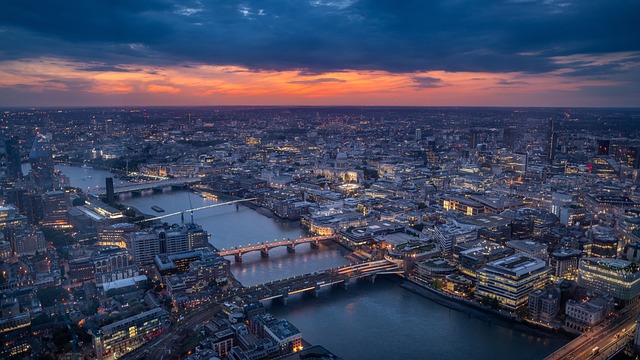If you’re a property owner or developer, understanding the concept of “right to light” is essential, especially in built-up areas where new developments are common. Right to light is a legal right that protects a property owner’s access to natural light through windows or other openings, allowing them to receive enough light to work or live comfortably without excessive obstruction from nearby buildings.
When it comes to safeguarding this right or challenging potential infringements, a “right to light notice” is often involved. This guide will explore what a right to light notice is, why it’s used, when you may need to consider issuing or responding to one, and the options available if a dispute arises. Blackstone Solicitors is here to support individuals across England and Wales in understanding their right to light and addressing any related issues.
Free Initial Telephone Discussion
For a free initial discussion with a member of our New Enquiries Team, get in touch with us today. We are experienced in dealing with all the aspects of construction law and Property Litigation, and once instructed, we will review your situation and discuss the options open to you in a clear and approachable manner. Early expert legal assistance can help ensure you are on the best possible footing from the start and also avoid the stress of dealing with these issues on your own. Simply call us on 0345 901 0445 or click here to make a free enquiry and a member of the team will get back to you.
What is Right to Light?
The right to light is an easement—a legal right tied to a property that allows the owner to receive a certain level of natural daylight. Under British law, a property owner can gain this right if they have received uninterrupted light through a window or opening for at least 20 years. This right is protected by common law and can be enforced if a neighbouring development threatens to block that light.
Right to light isn’t an absolute right; rather, it’s balanced against the rights of other property owners to build or develop. As such, legal assessments are often required to determine if a new structure will infringe upon the light received by an existing property. The aim is to balance the need for natural light with the right to develop, which is especially important in densely populated areas.
What is a Right to Light Notice?
A right to light notice is a formal notice that one party issues to inform a neighbouring property owner of a potential issue regarding their right to light. This notice is typically served by a property owner or developer who wishes to construct or modify a building that may affect the light entering an adjacent property. It provides formal notification of the intention to proceed with the development while acknowledging that it may impact neighbouring properties’ access to light.
This notice can serve multiple purposes:
- To Inform Neighbours of Upcoming Developments: The notice lets neighbouring property owners know about a planned development that could affect their light, giving them an opportunity to voice concerns or make legal representations if necessary.
- To Establish a Legal Position: By issuing a right to light notice, developers can establish their intention to build, giving neighbouring property owners a chance to raise objections or negotiate compensations before construction begins.
- To Prevent Future Disputes: By putting all parties on notice, right to light notices aim to address potential issues early on, reducing the likelihood of legal disputes and costly changes to building plans later in the process.
When is a Right to Light Notice Needed?
Not every development project requires a right to light notice, as smaller or more distant buildings may not affect neighbouring properties’ light. However, if a proposed structure is large, close to other properties, or blocks natural light to a degree that impacts quality of life or property value, issuing a right to light notice is often a wise step.
Examples of when a right to light notice might be necessary include:
- Building Extensions or New Floors: If you’re adding an extra floor or extending a building in a way that could cast a shadow on a neighbour’s property, a right to light notice may be required.
- Constructing New Developments in Urban Areas: Urban areas, where buildings are closer together, often require right to light considerations because any new structure may impact the light received by nearby properties.
- Significant Modifications to Existing Structures: Major alterations to existing buildings that could obstruct nearby windows or other light sources should be assessed for right to light implications.
How is Right to Light Assessed?
In right to light cases, a surveyor experienced in right to light assessments will often use the “Waldram method” to calculate how much natural light reaches a room and identify any significant reduction. This involves measuring the sky factor, which represents how much light enters a room from the visible sky.
A common guideline used in right to light cases is the “50/50 rule.” If a room receives less than 0.2% natural daylight across more than 50% of its area due to a development, this may be considered an infringement on the right to light.
What to Do If You Receive a Right to Light Notice
If you receive a right to light notice, it’s essential to understand your options and act promptly. Here’s what to consider:
- Evaluate the Potential Impact on Your Property: Carefully review the development plans and assess how they may affect your light. You may want to consult a right to light surveyor who can assess whether the proposed development could infringe on your property’s right to light.
- Seek Legal Advice: Consulting a solicitor experienced in right to light matters, like Blackstone Solicitors, can help you understand the legal implications. A solicitor can advise you on your rights and options, including whether you have grounds to negotiate, request changes, or seek compensation.
- Consider Negotiation: In many cases, right to light issues can be resolved through negotiation. Developers may be willing to adjust their plans to reduce the impact on your light, or they might offer compensation if adjustments aren’t feasible.
- Prepare for Possible Legal Action: If negotiations fail and you believe the development will significantly infringe on your right to light, you may choose to take legal action. Courts can grant injunctions (orders to halt construction) or award compensation if a right to light has been compromised.
Issuing a Right to Light Notice as a Developer
If you’re a developer or property owner planning a project, issuing a right to light notice can be an essential step in managing risk and protecting your investment. Here’s what to keep in mind:
- Engage a Right to Light Surveyor: An experienced surveyor can assess the potential impact of your development on neighbouring properties. This initial assessment can help you avoid infringements and anticipate any legal challenges.
- Consider Alternative Designs: Sometimes, modifying the design can reduce the impact on neighbouring properties’ light. This can help you avoid potential disputes and gain a smoother path to project completion.
- Issue a Right to Light Notice Early: Providing early notice to neighbours can open up communication and allow for any issues to be addressed before construction begins. This is particularly important if you are working on a large-scale development or in a densely populated area.
- Explore Compensation Options: Offering compensation may be an effective way to resolve right to light issues when design adjustments aren’t feasible. Compensation can be negotiated to avoid legal claims and enable your project to proceed without further delays.
Potential Outcomes of Right to Light Disputes
If a right to light dispute arises, there are typically three main outcomes:
- Amending the Development: The developer may choose to revise the project design to reduce the impact on neighbouring properties, potentially avoiding legal disputes.
- Financial Compensation: Financial settlements are a common resolution, particularly in cases where altering the design is impractical. Compensation may be paid to the affected property owner in exchange for allowing the development to proceed.
- Injunction: In some cases, courts may grant an injunction, which legally prevents the developer from proceeding with construction that infringes on the right to light. Injunctions are often granted only in cases of severe infringement.
How Blackstone Solicitors Can Help
At Blackstone Solicitors, we provide comprehensive guidance for both property owners and developers in England and Wales facing right to light issues. Whether you’re dealing with a right to light notice or planning a development, we can help you navigate the legal complexities, negotiate with neighbours, and, if necessary, pursue legal action.
Our team of experienced solicitors understands the balance between property rights and the need for development, and we’re committed to ensuring that your interests are fully protected. Whether it’s consulting on your rights, negotiating compensation, or assisting with legal claims, we offer tailored support at every stage of the process.
Conclusion
Right to light notices play a critical role in protecting natural light access while enabling development. Understanding what a right to light notice is, why it’s used, and what steps to take if you receive one can help you make informed decisions and safeguard your property rights.
For expert guidance, Blackstone Solicitors is here to help. Our team can provide the legal insight and support you need, ensuring that you can confidently address any right to light issues and protect your interests.
How we can help
We have a proven track record of helping clients deal with construction law and property litigation. We will guide you diligently and ensure all checks are carried out swiftly and efficiently and we firmly believe that with the right solicitors by your side, the entire process will seem more manageable and far less daunting. You can read more about the range of construction law and property litigation services we offer by clicking here: https://blackstonesolicitorsltd.co.uk/construction-solicitors/
How to Contact Our Property Litigation Solicitors
It is important for you to be well informed about the issues and possible implications of a property dispute. However, expert legal support is crucial in terms of ensuring a positive outcome to your case.
To speak to our Property Litigation solicitors today, simply call us on 0345 901 0445, or click here to make a free enquiry. We are well known across the country and can assist wherever you are based. We also have offices based in Cheshire and London.
Disclaimer: This article provides general information only and does not constitute legal advice on any individual circumstances.



